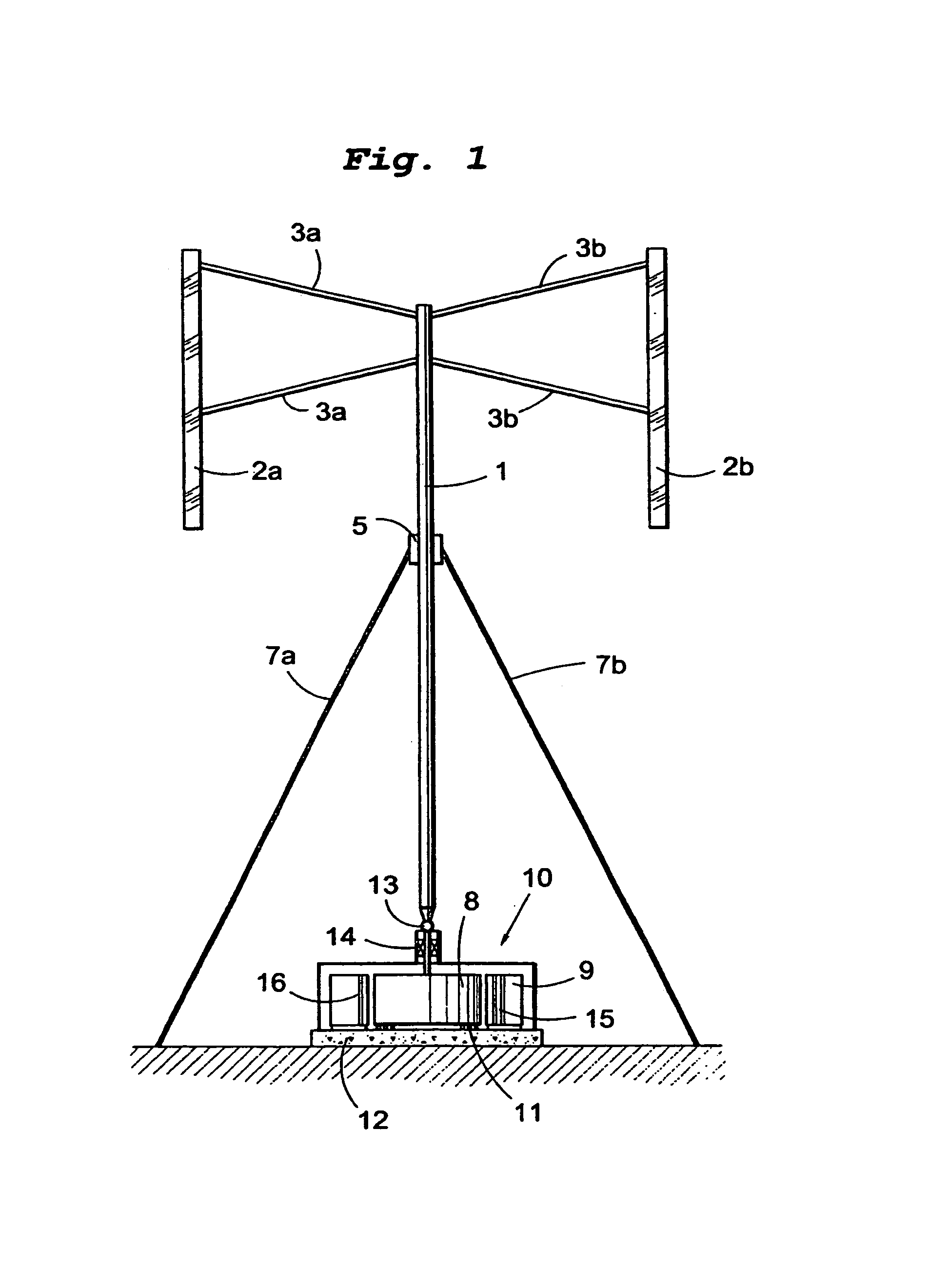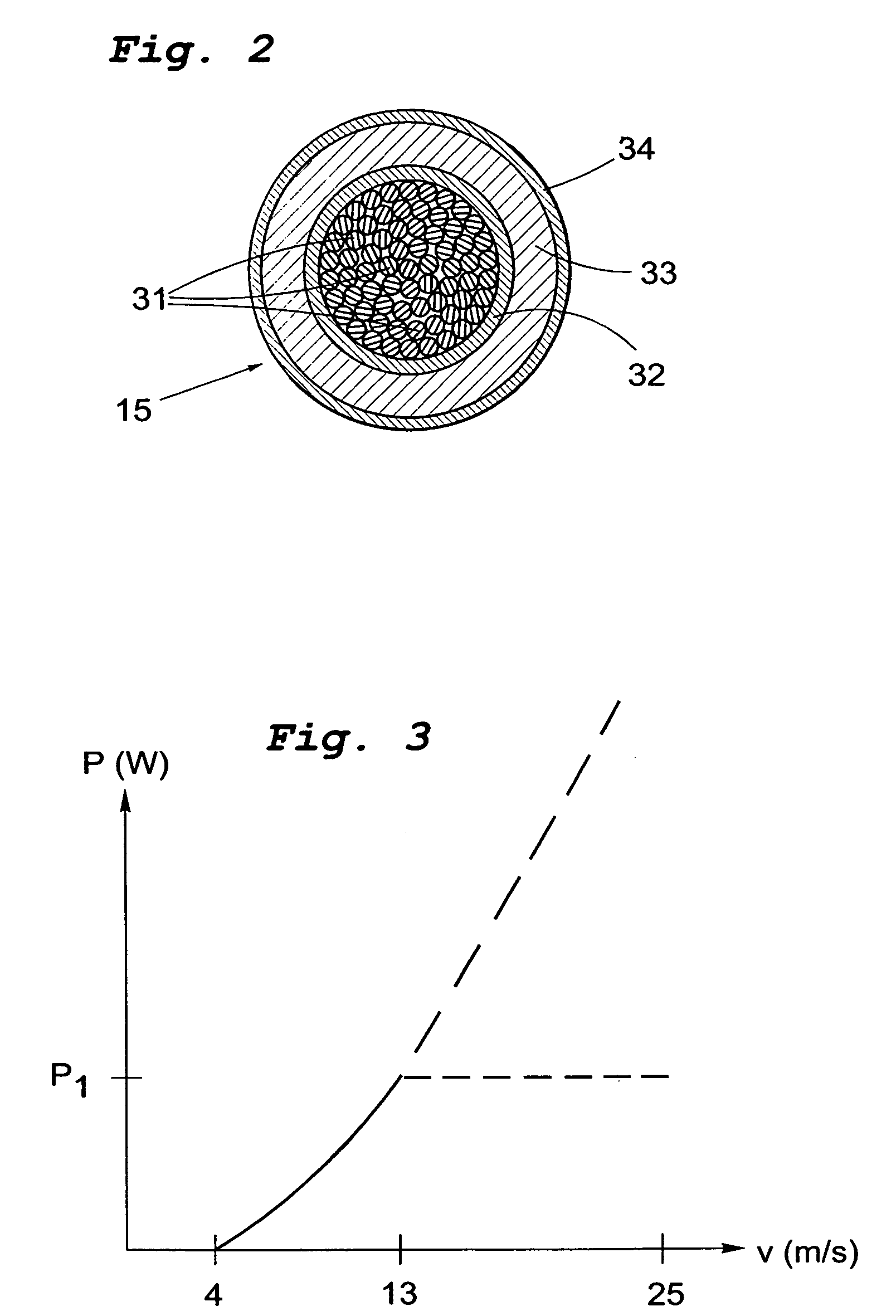Wind power electric device and method
a technology of electric devices and wind power, applied in the direction of electric generator control, renewable energy generation, greenhouse gas reduction, etc., can solve the problems of long time-consuming and laborious, wind power has encountered difficulties in successfully competing economically with other energy sources, and the total production of electric power is still very marginal, so as to facilitate the use of motor functions
- Summary
- Abstract
- Description
- Claims
- Application Information
AI Technical Summary
Benefits of technology
Problems solved by technology
Method used
Image
Examples
second embodiment
[0065]FIG. 5 is a cross section through a turbine blade in a wind-power unit in accordance with the invention.
first embodiment
[0066]FIG. 4 is a cross section through a turbine blade in a wind-power unit in accordance with the invention.
[0067]FIG. 6 is a diagram illustrating how several units are combined to form a wind-power plant.
[0068]FIG. 7 illustrates in perspective a second embodiment of the wind-power unit in accordance with the invention.
third embodiment
[0069]FIG. 8 illustrates a view from the side of a wind-power unit in accordance with the invention.
[0070]FIG. 9 illustrates a wind-power plant in accordance with the invention located at sea.
[0071]FIG. 10 shows an alternative example of rectification.
PUM
 Login to View More
Login to View More Abstract
Description
Claims
Application Information
 Login to View More
Login to View More - R&D
- Intellectual Property
- Life Sciences
- Materials
- Tech Scout
- Unparalleled Data Quality
- Higher Quality Content
- 60% Fewer Hallucinations
Browse by: Latest US Patents, China's latest patents, Technical Efficacy Thesaurus, Application Domain, Technology Topic, Popular Technical Reports.
© 2025 PatSnap. All rights reserved.Legal|Privacy policy|Modern Slavery Act Transparency Statement|Sitemap|About US| Contact US: help@patsnap.com



